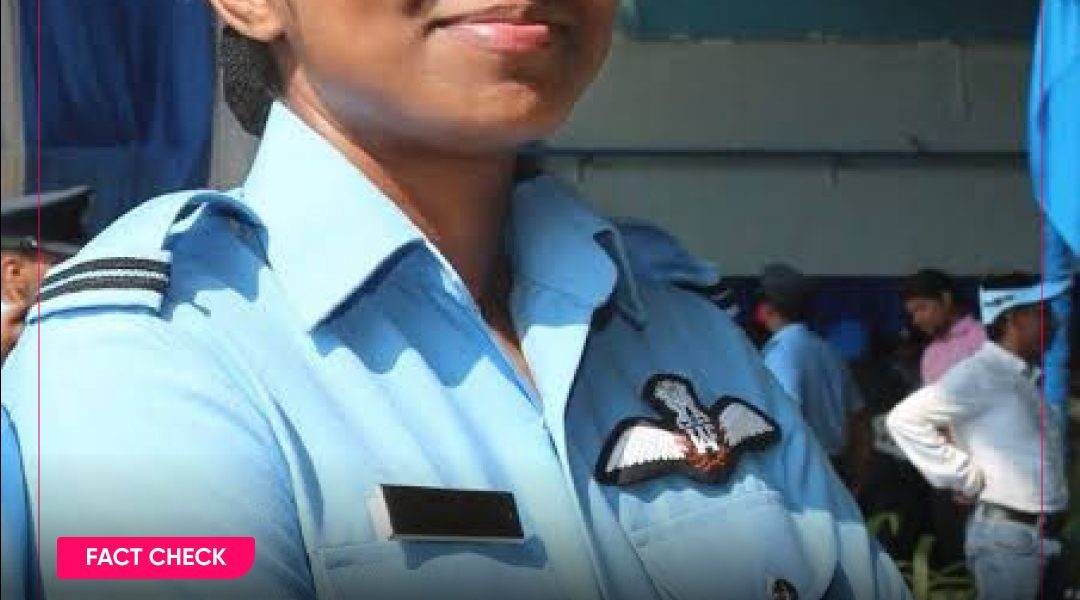Indian Female Pilot Shivani Singh: In the early days of May 2025, the geopolitical fault line between India and Pakistan once again lit up with tensions, jet engines, and digital misinformation. What started as a limited border escalation quickly transformed into one of the most significant air encounters between the two nuclear-armed neighbors in recent years, marked by Indian Operation “Sindhoor” and Pakistan’s retaliatory “Bunyan-ul-Marsoos”.
This latest conflict — though short-lived, echoed the ghosts of previous India-Pakistan wars and rekindled fears of regional instability. While the physical battlefield was largely confined to contested airspace and border zones, the digital domain exploded with conflicting narratives, viral misinformation, and unverified reports — including the widely circulated claim that a female Indian Air Force pilot, Wing Commander Shivani Singh, had been captured by Pakistan following the downing of a Rafale fighter jet.
Operation Sindhoor: India Strikes First
On May 7, 2025, the Indian Air Force launched a precision air operation dubbed “Operation Sindhoor,” claiming to target alleged militant infrastructure across the Line of Control. According to Indian defense officials, this was a “pre-emptive” mission based on actionable intelligence, reminiscent of the Balakot strikes of 2019.
However, the response was swift and overwhelming. Within hours, Pakistan’s Armed Forces initiated a coordinated air retaliation under a mission they termed “Operation Bunyan-ul-Marsoos”—an Arabic term signifying a solid and unified front.
Operation Bunyan-ul-Marsoos: Pakistan’s Measured but Devastating Response
On the night of May 8, the Pakistan Air Force launched air defense counterstrikes, shooting down five Indian fighter jets, including three Rafales — a platform that had been a symbol of India’s air superiority for years. Air Vice Marshal Aurangzeb Ahmed stated that the Pakistani Air Force achieved a decisive air-to-air victory with a 6–0 scoreline in aerial engagements. This assertion, though challenged by Indian officials, was widely circulated in Pakistani media.
One of the most shocking elements of the operation came not from the battlefield but from social media: rumors spread like wildfire that a female Indian fighter pilot — Wing Commander Shivani Singh — had been captured alive after her jet was shot down and crashed in Pakistani-controlled territory.
The Shivani Singh Rumor Storm
The story gained immediate traction on Twitter, TikTok, and Telegram, with videos and fabricated screenshots claiming to show the captured pilot in military custody. Some viral posts even referenced an “exclusive footage” showing her parachuting down over Kashmir and being detained by Pakistani villagers. Pro-Pakistan accounts hailed the moment as a symbolic victory; others invoked humanitarian concern and called for her release.
However, on May 10, the Director General of Pakistan’s Inter-Services Public Relations (ISPR), Lt. Gen. Ahmed Sharif Chaudhry, dismissed these claims in a televised statement:
“There is no Indian pilot in our custody. The rumors circulating about the capture of any personnel — male or female — are completely baseless.”
He further emphasized that while Pakistan had successfully responded to Indian aggression, it remained committed to peace and transparency.
Media & Military Morale
The Pakistani public responded to Operation Bunyan-ul-Marsoos with a mix of patriotic pride and cautious relief. Footage of jets taking off, patriotic songs, and montages of supposed radar footage dominated the news cycle. Defense analysts in Islamabad described the operation as a “calculated show of deterrence”, intended not to escalate conflict but to firmly repel it.
In India, public discourse was more divided. While Indian officials downplayed the losses, the opposition and segments of civil society called for transparency on the scope and outcome of Operation Sindhoor, particularly in light of Pakistan’s narrative and video proof circulating online.
A Fragile Calm — for Now
As international observers and mediators, including China, Turkey, and the United States, called for restraint, both sides appear to have stepped back — for now. Border tensions remain high, but no further air raids have been reported as of May 11, 2025.
The 2025 conflict may be brief, but it left behind important lessons — not only about the scale and speed of modern warfare, but also about the power of social media to manufacture consent, spread disinformation, or inflame passions across borders.
As for Wing Commander Shivani Singh, she remains a trending name — not for any confirmed act of heroism or tragedy, but as a case study in how truth, rumor, and propaganda blur in the fog of digital war.
US Mediation: Trump Declares Ceasefire between India and Pakistan
As regional tensions reached their peak, U.S. President Donald J. Trump, who played an active diplomatic role through backchannel discussions, tweeted on May 10:
“After a long night of talks mediated by the United States, I am pleased to announce that India and Pakistan have agreed to a FULL AND IMMEDIATE CEASEFIRE. Congratulations to both Countries on using Common Sense and Great Intelligence. Thank you for your attention to this matter!”
It highlighted the crucial role of international mediation in defusing the situation before it spiraled out of control.





